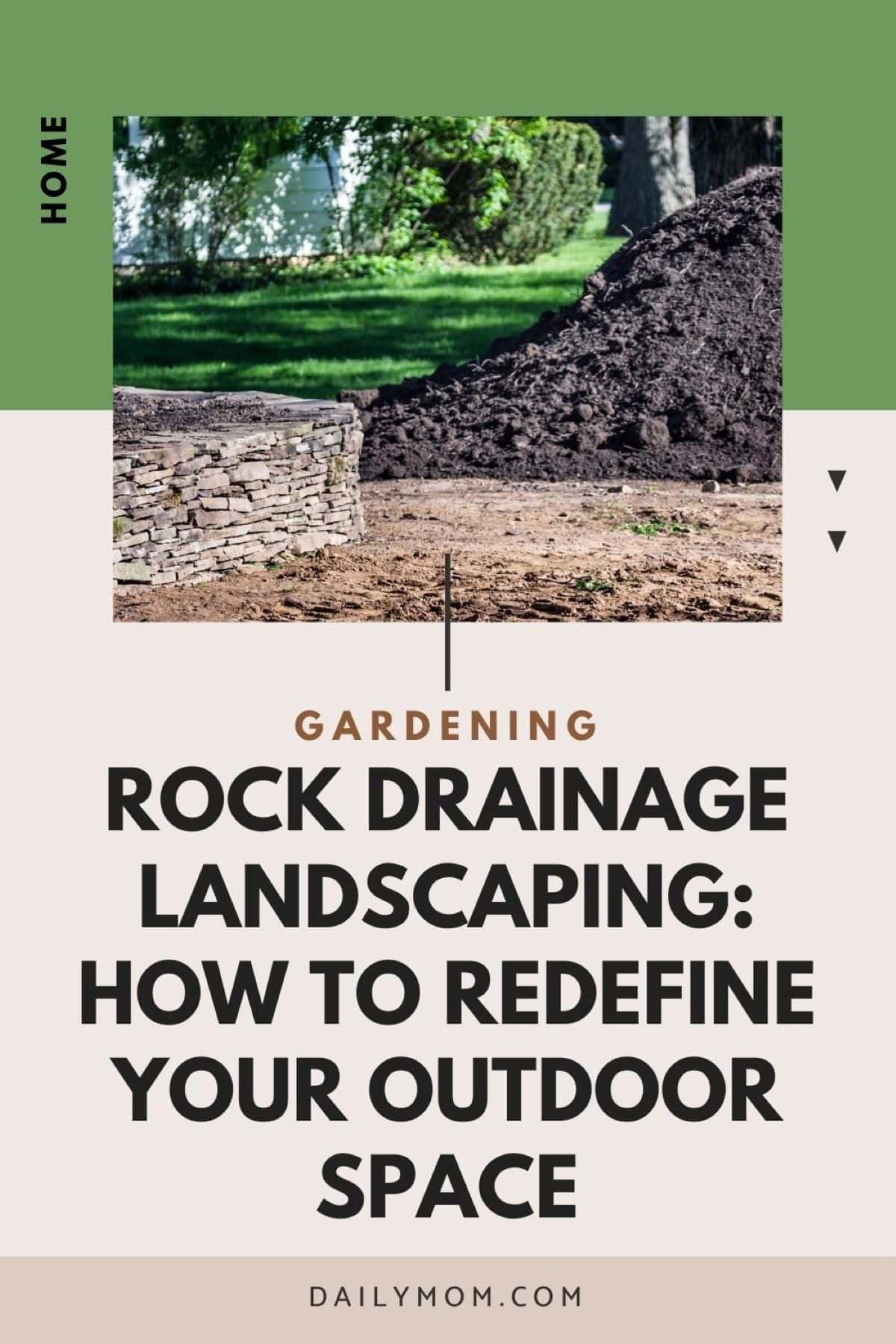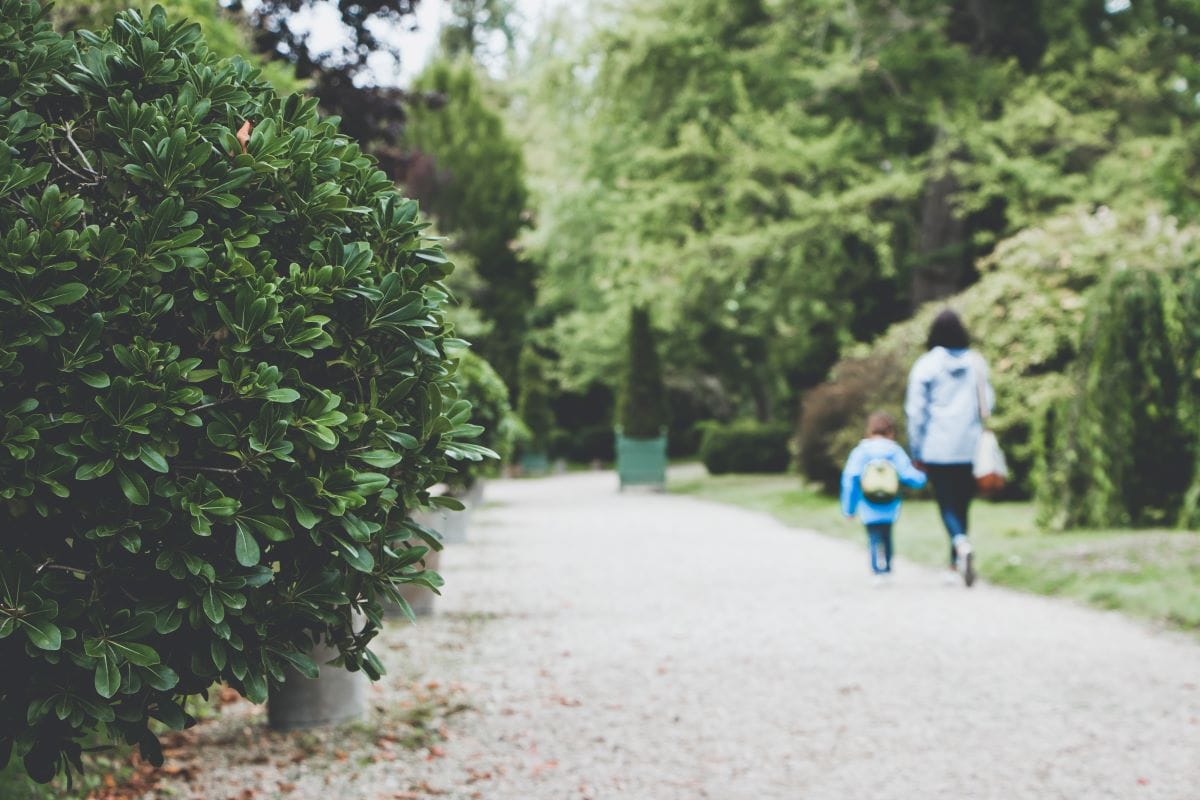When it comes to landscaping, one concept has been steadily gaining ground, quite literally: Rock drainage landscaping – the art of using stones and rocks to shape both the aesthetics and functionality of outdoor spaces – is a trend that’s making a splash in the world of sustainable landscaping practices. While it might seem like a new and novel idea, it’s rooted in the age-old wisdom of harnessing the power of nature to achieve striking, eco-friendly landscapes.
The growing importance of sustainable landscaping practices has led to the rise of innovative methods that not only enhance the beauty of our outdoor spaces but also help protect our environment. Rock drainage landscaping fits the bill perfectly. By making rocks a focal point of your outdoor design, you can address pressing issues like water management, erosion control, and conservation without sacrificing the aesthetic appeal of your property.
This post aims to explore the benefits and steps of rock drainage landscaping, providing you with valuable insights and inspiration for your landscaping endeavors. We’ll tackle the nitty-gritty of this eco-friendly and visually appealing approach to rock landscaping. Let’s get started on transforming your outdoor space into a haven of beauty, sustainability, and functionality.
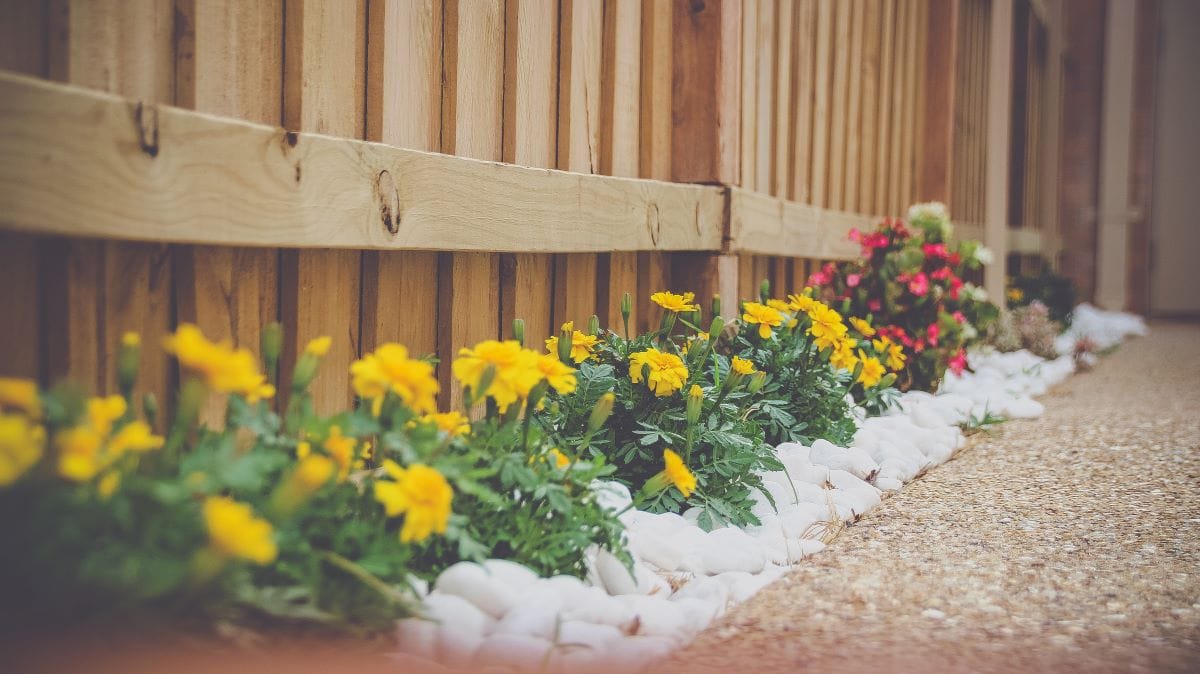
Understanding Rock Drainage Landscaping
Definition and Objectives of Rock Drainage Landscaping
Rock drainage landscaping is an innovative approach that seeks to combine the beauty of natural rock elements with a practical solution for managing rainwater. At its core, it’s all about marrying form and function, where rocks play a central role in creating sustainable outdoor spaces.
The primary objectives of rock drainage landscaping are two-fold. First, it aims to manage rainwater effectively and prevent erosion. This becomes particularly essential in regions prone to heavy rainfall or flash floods. By incorporating various rock features, you can guide the flow of water, reduce soil erosion, and minimize the risk of flooding.
Secondly, this approach capitalizes on the aesthetic appeal and versatility of rock features. Rocks, in all their shapes, sizes, and colors, can be used to create stunning visual landscapes. From rock gardens to meandering paths, the versatility of rocks in landscaping is astonishing. This duality is what makes rock drainage landscaping such an attractive option for eco-conscious homeowners and businesses alike.
How it Helps Manage Rainwater and Prevent Erosion
The unique beauty of rock drainage landscaping goes hand in hand with its practical benefits. One of its standout features is the capacity to manage rainwater effectively. When rainfall occurs, water often runs off, leading to soil erosion and sometimes flooding. By using rocks strategically, you can divert and control the flow of rainwater. Rocks act as barriers and channels, guiding water away from vulnerable areas and into designated drainage features.
This proactive approach not only prevents flooding but also preserves your landscape from soil erosion, ensuring the longevity of your outdoor space. This is particularly beneficial for properties with slopes or uneven terrain, where water runoff can be a significant concern.
Aesthetic Appeal and Versatility of Rock Features
Beyond their utilitarian function, rocks can add a touch of timeless elegance to your landscaping. The aesthetic appeal and endless landscaping ideas for rocks are undeniable. From serene rock gardens that exude tranquility to visually striking boulder arrangements that demand attention, there’s a style for every taste.
But it’s not just about appearance; it’s also about versatility. Rocks come in various shapes, sizes, and colors, and this diversity allows for creativity in design. Whether you’re envisioning a desert-inspired landscape with rock landscaping around trees, or you’re intrigued by the idea of landscaping with black rocks, there are endless possibilities.
In the next section, we’ll dive deeper into the benefits of rock drainage landscaping, shedding light on how it can enhance both the functionality and aesthetics of your outdoor spaces.
Read More: 5 Tips for Landscaping on the Cheap

Benefits of Rock Drainage Landscaping
When considering landscaping options, it’s crucial to understand the multitude of benefits that rock drainage landscaping brings to the table. Here are some the advantages, from improved water management to the low maintenance demands of this eco-friendly approach.
Improved Water Management
- Preventing Flooding and Soil Erosion: The most immediate and crucial benefit of rock drainage landscaping lies in its ability to mitigate the risk of flooding and soil erosion. By using rock landscaping strategically, you can prevent water from accumulating in unwanted areas. Instead, the rocks guide the flow of rainwater, channeling it away from vulnerable spots, such as the foundation of your home or garden beds. This proactive measure can save you from expensive repairs and the hassle of dealing with water damage.
Additionally, by using rocks in landscaping to make pathways and dry riverbeds, you can create aesthetically pleasing solutions for managing water flow. These features can serve as both functional drainage channels and visual focal points in your landscape. - Conserving Water Resources: Rock drainage landscaping goes beyond immediate water management. It’s also about long-term water conservation. By directing rainwater to where it’s needed and preventing wasteful runoff, you can significantly conserve water resources. This not only benefits your community but also reduces your water bills and your environmental impact.
Low Maintenance and Long-Lasting
- Reduced Need for Watering: One of the most attractive aspects of rock drainage landscaping is its low-maintenance nature. In contrast to traditional lawns, which require frequent watering and mowing, a well-designed rock drainage landscape reduces the need for watering. The rocks themselves do not require hydration, and their presence helps retain soil moisture, keeping your plants healthy with minimal effort.
- Minimal Upkeep Compared to Traditional Lawns: The rocks used in rock landscaping are known for their durability. They require minimal upkeep compared to traditional lawns. Say goodbye to constant weeding, mowing, and fertilizing. With rock drainage landscaping, you can enjoy your outdoor space without the incessant demands of lawn maintenance.
Aesthetic Appeal and Customization
- Enhancing Curb Appeal: Rock features, with their unique textures and colors, have the potential to significantly enhance your property’s curb appeal. The striking visual appeal of well-placed rocks, whether in the form of a rock garden, decorative boulders, or even river rocks, can be an eye-catching addition to your landscape.
- Creating Unique and Visually Pleasing Landscapes: The diversity of rocks allows for an infinite range of design possibilities. Whether you prefer the sleek elegance of landscaping with black rocks or the vibrant look of landscaping with colored rocks, you can tailor your landscape to match your vision. The ability to customize your outdoor space to suit your tastes and preferences is one of the prime advantages of rock drainage landscaping.
Next, we’ll explore the step-by-step process of creating a rock drainage landscape, so you can turn these benefits into a reality for your outdoor space.
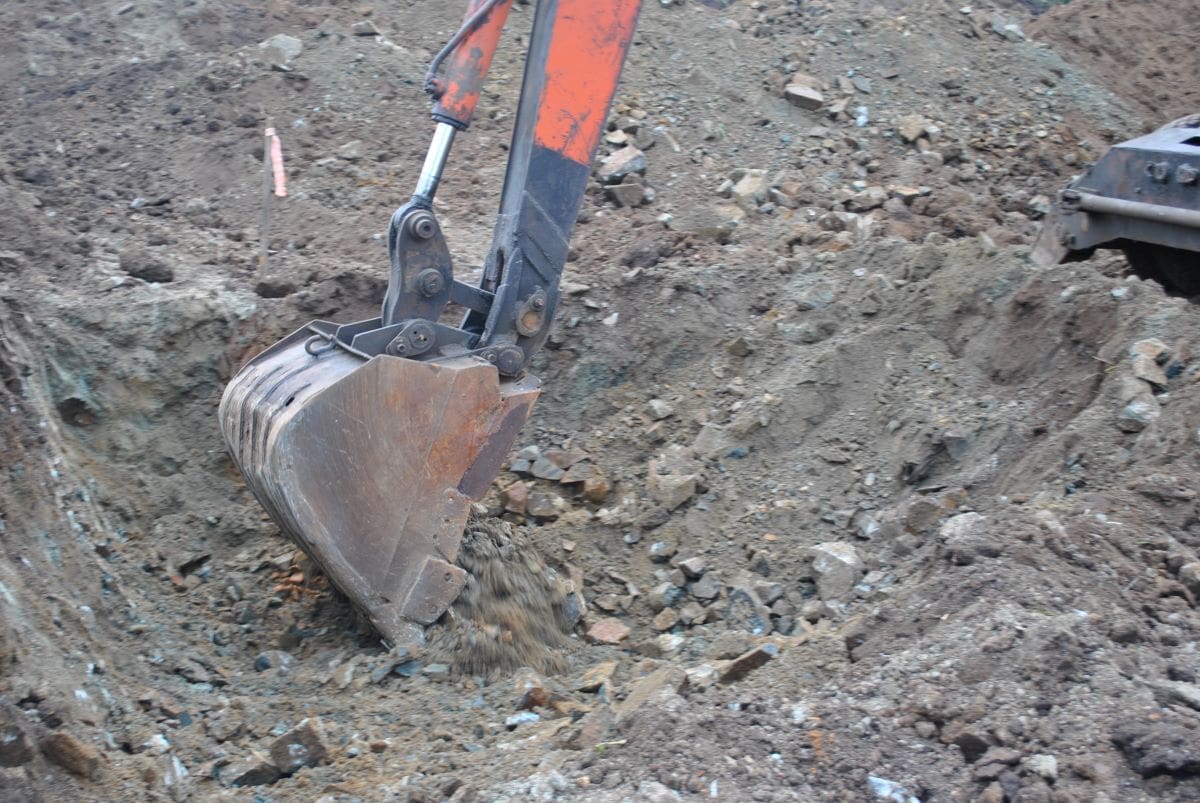
Steps to Create a Rock Drainage Landscape
Now that we’ve explored the benefits of rock drainage landscaping, let’s dive into the practical aspects. Creating a rock drainage landscape requires a thoughtful approach, from site assessment to maintenance. Here’s a step-by-step guide to get you started.
Site Assessment
Before you embark on your rock drainage landscaping project, it’s essential to conduct a thorough site assessment. This step involves:
- Analyzing Drainage Issues and Problem Areas: Identify areas of your property that experience drainage issues. Look for spots where water accumulates or flows in unwanted directions. Understanding these problem areas will guide your rock placement and design.
- Identifying the Optimal Locations for Rock Features: Determine the best locations for rock features. These should be strategically placed to redirect water and prevent soil erosion. Consider the natural slope of your land, the proximity to your home, and the desired visual impact.
Design and Planning
Once you have a clear understanding of your landscape’s challenges, it’s time to move to the design and planning phase, thinking about landscaping ideas for rocks. This involves:
- Selecting Appropriate Rocks and Materials: Choose rocks and materials that align with your design vision and serve the intended function. Consider factors like size, shape, and color. For landscaping with black rocks, you might opt for sleek, dark stones. On the other hand, if you’re interested in a more colorful arrangement, explore various options.
- Creating a Layout that Complements the Existing Landscape: Your rock drainage landscape should harmonize with your property’s existing features. The design should flow naturally with your surroundings, enhancing the overall aesthetics. Whether you’re incorporating rock landscaping around trees or creating a central rock garden, make sure it complements your landscape’s unique characteristics.
Excavation and Grading
Before placing the rocks, you’ll need to prepare the site through excavation and grading. This involves:
- Preparing the Site for Proper Drainage: Excavate areas where you intend to place rocks to ensure proper drainage. This step creates channels for water to flow, preventing pooling in unwanted areas.
- Ensuring a Stable Base for Rock Placement: To ensure the stability and longevity of your rock drainage landscape, a stable base is crucial. Grading the soil and compacting it properly provides a foundation for the rocks to be securely positioned.
Rock Installation
Now it’s time to position the rocks according to your design plan. This step includes:
- Placing Rocks Strategically to Direct Water Flow: Position rocks strategically to guide water flow in the desired direction. Create channels and barriers to manage rainwater effectively.
- Incorporating Decorative Elements like Boulders and Pebbles: Enhance the aesthetics of your rock drainage landscape by adding decorative elements. Boulders, pebbles, or other features can be used to create focal points and add visual interest to the landscape.
Planting and Landscaping
To complete your rock drainage landscape, consider introducing drought-resistant plants and native vegetation. This phase includes:
- Introducing Drought-Resistant Plants: Select plants that thrive in your region and require minimal watering. Drought-resistant plants are ideal for a low-maintenance landscape.
- Adding Native Vegetation for Ecological Benefits: Incorporate native vegetation to support local ecosystems. Native plants are well-adapted to your area’s climate and provide essential resources for wildlife.
Maintenance and Care
Maintaining your rock drainage landscape ensures its longevity and functionality. This phase encompasses:
- Periodic Inspection and Adjustment of Rocks: Regularly inspect your rock features and adjust them as needed to maintain proper water flow. Shift rocks that have moved and ensure channels remain clear.
- Weeding and Maintaining Plant Life: Weeding and maintaining your plants are essential for a pristine landscape. Remove weeds to prevent competition with your chosen vegetation.
- Managing Drainage Systems (if Applicable): If you’ve incorporated drainage systems, ensure they function correctly. Regularly check drains and pipes for blockages or damage.
Next, we’ll explore sustainability and environmental considerations of drainage landscaping ideas.
Read More: 5 Ways to Amp Up Your Home’s Curb Appeal Through Front Door Design

Sustainability and Environmental Considerations
One of the most compelling aspects of rock drainage landscaping is its inherent commitment to sustainability and environmental consciousness. In this section, we’ll explore how rock drainage landscaping actively supports the environment and promotes eco-friendly practices.
Explanation of How Rock Drainage Landscaping Supports the Environment
Rock drainage landscaping aligns with eco-conscious principles by addressing a range of environmental concerns. First and foremost, it contributes to water conservation by efficiently managing rainwater. Instead of allowing water to flow away, it’s directed where it’s needed, reducing the burden on local water supplies.
Moreover, this approach reduces soil erosion, which can have harmful effects on local ecosystems and water quality. By creating stable drainage pathways, rocks help prevent the loss of topsoil, preserving the integrity of the landscape.
Reducing the Carbon Footprint of Traditional Landscaping Practices
Traditional landscaping practices often involve the use of energy-intensive equipment like lawnmowers and frequent watering. By opting for rock drainage landscaping, you can significantly reduce your carbon footprint. The low-maintenance nature of rock landscapes means less reliance on power equipment, leading to reduced emissions and energy consumption.
In addition, the reduction in water usage due to the efficient water management of rock drainage landscaping further contributes to a smaller environmental impact. By shifting away from traditional lawns, you’re actively participating in a greener, more sustainable future.
Encouragement to Use Eco-Friendly Materials and Techniques
To enhance the sustainability of your rock drainage landscape, consider using eco-friendly materials and techniques. Opt for locally sourced rocks and materials to minimize transportation-related emissions. You can also explore options like rain gardens, which incorporate native vegetation to enhance biodiversity and support pollinators.
By taking a holistic approach to sustainability in your landscaping project, you can create a space that not only benefits your property but also contributes positively to the broader environment.
Next, we’ll delve into cost considerations and budgeting tips for those interested in embarking on a rock drainage landscaping project.
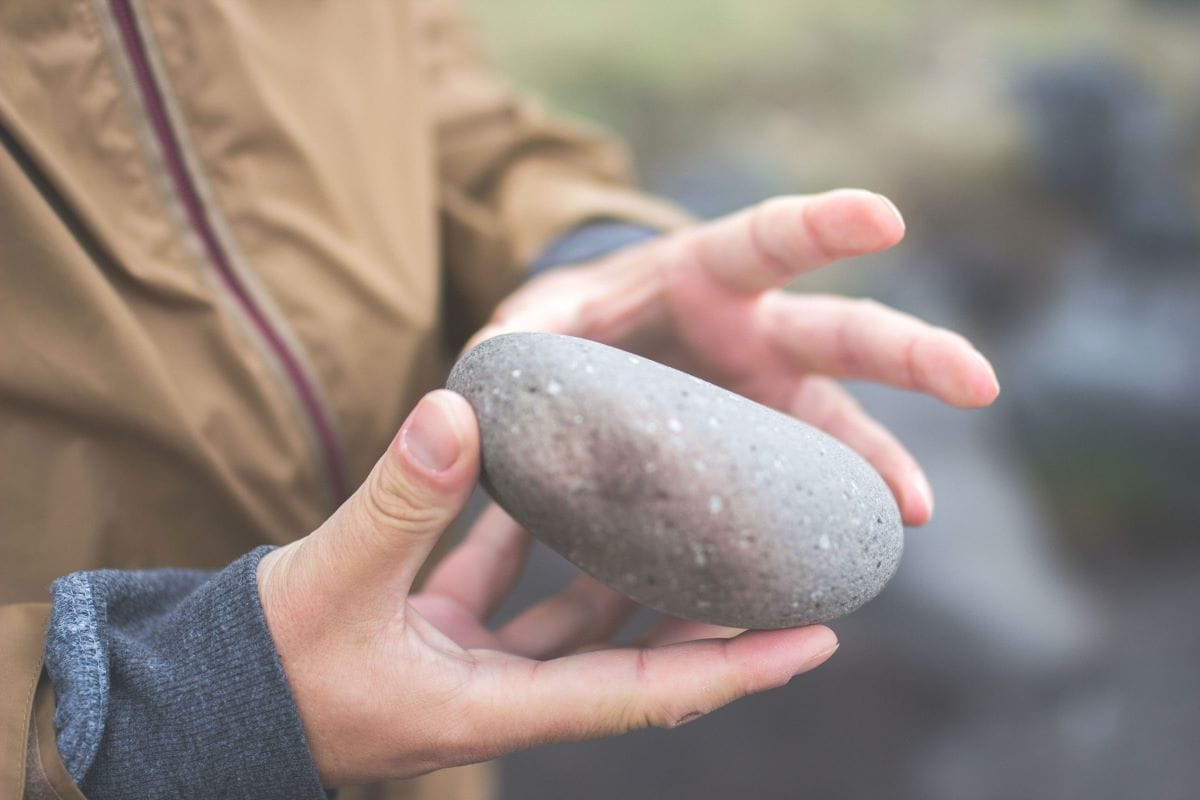
Cost Considerations and Budgeting Tips
Undertaking a rock drainage landscaping project offers numerous benefits, but it’s important to consider the associated costs. In this section, we’ll explore the financial aspects of rock drainage landscaping and provide practical budgeting tips.
Estimating the Cost of Rock Drainage Landscaping
The cost of a rock drainage landscaping project can vary widely depending on various factors. Here’s a breakdown of what to consider:
- Materials: The primary cost component is the materials, including the rocks, boulders, and additional landscaping elements. The cost will depend on the type, size, and quantity of rocks chosen.
- Labor: Labor costs can vary based on the complexity of the project. If you hire professionals, their fees will be a significant part of the budget.
- Equipment: If specialized equipment is required for excavation, grading, or rock placement, these costs should be factored in.
- Plants and Vegetation: Costs for drought-resistant plants, native vegetation, and other landscaping elements should be considered.
- Drainage Systems: If your project includes drainage systems like dry riverbeds or French drains, these can add to the budget.
- Design and Planning: Fees for landscape design services, if needed, should be included in the budget.
Tips for Budgeting and Cost-Saving Strategies
To ensure your rock drainage landscaping project remains within your budget, consider these cost-saving strategies:
- DIY vs. Professional Help: Assess whether you can take on some of the tasks yourself, such as excavation or planting, to reduce labor costs. However, be sure to consult professionals for specialized tasks like rock placement.
- Use Local Materials: Opt for locally sourced rocks and materials to reduce transportation costs.
- Plan for Phases: If your budget is limited, consider breaking your project into phases. This allows you to complete one part at a time, making it more financially manageable.
- Explore Recycled Materials: Consider using recycled or reclaimed materials for hardscaping elements. This can be a sustainable and cost-effective choice.
- Compare Quotes: Get quotes from multiple contractors or suppliers to find the most cost-effective options.
- Consider Long-Term Savings: While the initial cost of rock drainage landscaping may be higher than traditional landscaping, remember that the long-term savings in water and maintenance costs can offset the initial investment.
- Seek Local Incentives: Some regions offer incentives or rebates for sustainable landscaping practices. Check with local government programs or organizations for potential financial support.
Understanding the financial aspects of your rock drainage landscaping project is crucial for a successful and cost-effective transformation of your outdoor space. With thoughtful budgeting and cost-saving strategies, you can achieve your desired results while staying within your financial means.
Next, we’ll explore common maintenance tasks and tips for keeping your rock drainage landscape looking pristine.
Read More: 4 Reasons You Should Hire a Landscape Architect for Your Outdoor Space
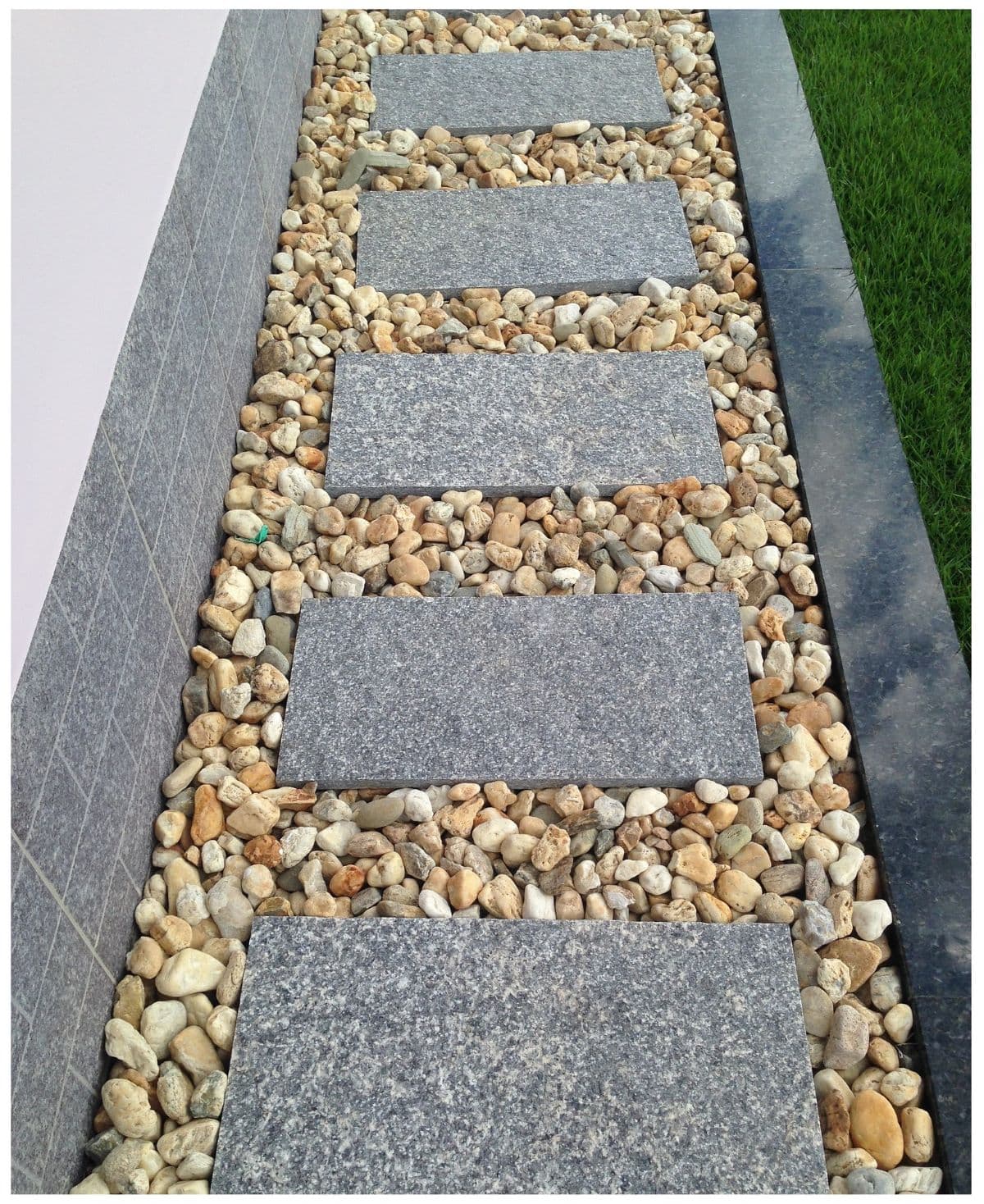
Rock Drainage Landscape Maintenance and Troubleshooting
Maintaining a rock drainage landscape is key to ensuring its longevity and continued functionality. Here are a few common maintenance tasks and troubleshooting issues that may arise.
Common Maintenance Tasks
- Inspecting and Adjusting Rocks: Regularly inspect the placement of rocks in your landscape. Rocks may shift over time due to weather conditions or other factors. Adjust them as needed to maintain proper water flow.
- Weeding: Weeds can occasionally sprout between rocks or in planting areas. Routinely weed your landscape to prevent unwanted plant growth that can disrupt the overall aesthetic.
- Pruning and Trimming: If you’ve incorporated plants in your rock drainage landscape, keep them well-pruned and trimmed. This not only maintains the visual appeal but also ensures healthy growth.
- Drainage Systems: If you have drainage systems like dry riverbeds or French drains, check them periodically for clogs or damage. Clear any debris that may hinder water flow.
- Mulch: Applying mulch to planting areas can help retain moisture and deter weed growth. Refresh the mulch as needed to maintain its effectiveness.
Addressing Issues like Weeds or Uneven Rocks
- Weed Control: If you notice an increase in weed growth, consider using natural weed control methods such as mulch, ground cover plants, or environmentally friendly herbicides. Manual removal of weeds is also effective, but it should be done regularly to prevent the spread of weeds.
- Uneven Rocks: If rocks have become uneven due to shifting or erosion, reposition them to ensure proper drainage. This can be done with simple adjustments or by adding additional rocks to create stable channels.
- Drainage Blockage: If you observe signs of drainage blockage, such as water pooling in unintended areas, investigate the source of the issue. It could be caused by debris accumulation or damage to the drainage system. Clear blockages and repair any damage promptly.
- Plant Health: Ensure the health of your plants by monitoring for signs of disease or poor growth. Prune damaged or overgrown branches and provide adequate care, including watering and fertilization if necessary.
By staying vigilant and addressing maintenance tasks promptly, you can keep your rock drainage landscape looking its best and functioning optimally. Regular upkeep ensures that your investment in sustainable and stylish landscaping continues to pay off.
In the final section, we’ll wrap up our exploration of the benefits and beauty of rock drainage landscaping.
The Art of Drainage and Rock Landscaping
Rock drainage landscaping stands as an example of how form and function can seamlessly coexist.
Rock drainage landscaping offers a holistic and sustainable approach to transforming your outdoor space. It’s a testament to the marriage of aesthetics and eco-consciousness, where nature’s beauty and natural processes are harnessed to create a harmonious environment. Embracing practices like rock drainage landscaping not only enhances our landscapes but also contributes positively to our planet’s well-being.
So, whether you’re inspired to embark on a rock drainage landscaping project or simply intrigued by the possibilities, remember the art of landscaping with rocks. It’s an enduring and timeless choice, one that makes a powerful statement about the balance of beauty and sustainability.
WANT TO READ MORE?
Check out Daily Mom’s Garden section for more tips and tricks!
CONNECT WITH DAILY MOM
💖 NEWSLETTER: DAILY READS IN YOUR INBOX 💖
Sign up to receive our picks for the best things to do, see and buy so you can relax and focus on more important tasks! Let us help you be the best version of yourself you can be!
BE SOCIAL WITH US
📌 LOVE IT? PIN IT!📌
